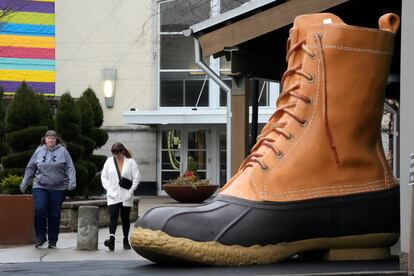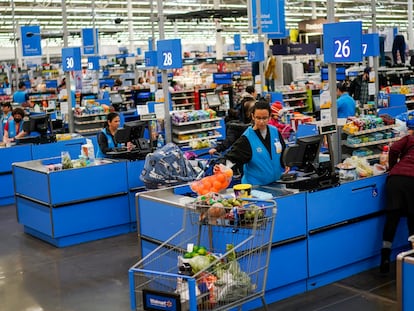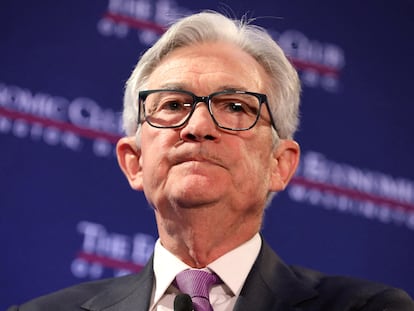Retail sales jump as Americans defy inflation and rate hikes
Several factors likely helped propel last month’s spending

America’s consumers rebounded last month from a weak holiday shopping season by boosting their spending at stores and restaurants at the fastest pace in nearly two years, underscoring the economy’s resilience in the face of higher prices and multiple interest rate hikes by the Federal Reserve.
The government said Wednesday that retail sales jumped 3% in January, after having sunk the previous two months. It was the largest one-month increase since March 2021, when a round of stimulus checks gave a big boost to spending. Excluding the pandemic era, January’s rise was the largest in more than two decades.
Driving the gain was a jump in auto sales, along with healthy spending at restaurants, electronics stores and furniture outlets. Some of the supply shortages that had slowed auto production have eased, and more cars are gradually moving onto dealer lots. The enlarged inventories have enabled dealers to meet more of the nation’s pent-up demand for vehicles.
Wednesday’s robust retail sales figures, along with a strong January job report, suggest that the economy remains durable, perhaps even strengthening, and at little risk of succumbing to a recession anytime soon. Earlier this week, economists at Goldman Sachs reduced the likelihood of a recession this year from 35% to just 25%.
Brisk consumer spending, though, can also intensify upward pressure on inflation. The latest measure of consumer inflation showed that it slowed slightly on a year-over-year basis in January but rose sharply from December to January.
The combination of solid spending and hiring will also likely raise pressure on the Federal Reserve to raise its benchmark interest rate even further. The Fed has already signaled that it expects to carry out two more quarter-point hikes, to a range of 5% to 5.25%, which would be the highest level in 15 years. On Tuesday, Deutsche Bank said it expected the Fed to add two additional hikes on top of that this year, to a range of 5.5% to 5.75%.
Some of last month’s retail sales gain probably reflected unusually warm weather, which might have encouraged more people to buy cars, go shopping and eat out. The government’s seasonal adjustment process also likely helped boost January’s figure. Its seasonal adjustments aim to modify sales data for typical calendar patterns. An example is a spike in spending during the holiday shopping season and then a drop in January.
“While the report suggests consumers got their mojo back, seasonal adjustment noise and the milder winter weather in January explain part of the strength,” said Gregory Daco, chief economist at EY Parthenon. “The stronger-than-expected report puts consumption on a better footing at the start of 2023 and points to positive though sluggish consumer spending growth” in the current January-March quarter.
The retail sales figures showed that spending at restaurants soared 7.2% in January and more than 25% compared with a year earlier. The retail sales report isn’t adjusted for inflation, so some of that increase reflects higher prices. According to the government’s inflation report, restaurant prices have increased 8% in the past year.
Whether America’s shoppers can continue to spend briskly will help determine how the economy fares. The eight interest rate hikes the Fed has carried out in the past year have raised the costs of mortgages and auto loans as well as credit card interest rates. Inflation has also eroded workers’ paychecks, thereby limiting their ability to spend freely.
Some signs indicate that businesses are expecting a more cautious consumer. Coca-Cola, for example, said Tuesday that its price hikes last year didn’t reduce demand for its beverages during the October-December quarter. But the company added that it anticipates slower sales growth this year and expects to raise prices at a much slower rate.
And PepsiCo said it wasn’t planning further price hikes, according to a Reuters report, because it isn’t sure consumers will be able to afford them this year.
For all the challenges facing consumers, they continue to show resilience. Several factors likely helped propel last month’s spending. About 70 million recipients of Social Security and other government pension programs last month received an 8.7% boost in their benefit checks, an annual cost-of-living adjustment to offset inflation. It was the largest such increase in 40 years.
The job market also surged in January, with nearly a half-million new jobs added. The unemployment rate reached 3.4%, its lowest level since 1969. With many businesses still eager to hire and keep workers, average wages and salaries have risen about 5% from a year ago – among the fastest such rates of increase in decades.
Those raises have generally been eaten up by inflation. Still, consumer price increases have been slowing. And for many households, a sharp drop in gas prices since summer has freed up more money to spend.
On Tuesday, the government reported that inflation eased again in January compared with a year earlier, the seventh straight such decline, to 6.4% from 6.5% in December. But on a month-to-month basis, price increases accelerated in January compared with November and December, evidence that high inflation won’t be defeated quickly or smoothly.
Lorie Logan, president of the Federal Reserve Bank of Dallas and a member of the 19-person Fed committee that sets interest rates, warned Tuesday that the central bank might have to carry out more rate hikes than it has so far signaled.
“We must remain prepared to continue rate increases for a longer period than previously anticipated, if such a path is necessary to respond to changes in the economic outlook,” she said in prepared remarks.
Sign up for our weekly newsletter to get more English-language news coverage from EL PAÍS USA Edition
Tu suscripción se está usando en otro dispositivo
¿Quieres añadir otro usuario a tu suscripción?
Si continúas leyendo en este dispositivo, no se podrá leer en el otro.
FlechaTu suscripción se está usando en otro dispositivo y solo puedes acceder a EL PAÍS desde un dispositivo a la vez.
Si quieres compartir tu cuenta, cambia tu suscripción a la modalidad Premium, así podrás añadir otro usuario. Cada uno accederá con su propia cuenta de email, lo que os permitirá personalizar vuestra experiencia en EL PAÍS.
¿Tienes una suscripción de empresa? Accede aquí para contratar más cuentas.
En el caso de no saber quién está usando tu cuenta, te recomendamos cambiar tu contraseña aquí.
Si decides continuar compartiendo tu cuenta, este mensaje se mostrará en tu dispositivo y en el de la otra persona que está usando tu cuenta de forma indefinida, afectando a tu experiencia de lectura. Puedes consultar aquí los términos y condiciones de la suscripción digital.
More information
Archived In
Últimas noticias
Most viewed
- Sinaloa Cartel war is taking its toll on Los Chapitos
- Oona Chaplin: ‘I told James Cameron that I was living in a treehouse and starting a permaculture project with a friend’
- Reinhard Genzel, Nobel laureate in physics: ‘One-minute videos will never give you the truth’
- Why the price of coffee has skyrocketed: from Brazilian plantations to specialty coffee houses
- Silver prices are going crazy: This is what’s fueling the rally










































